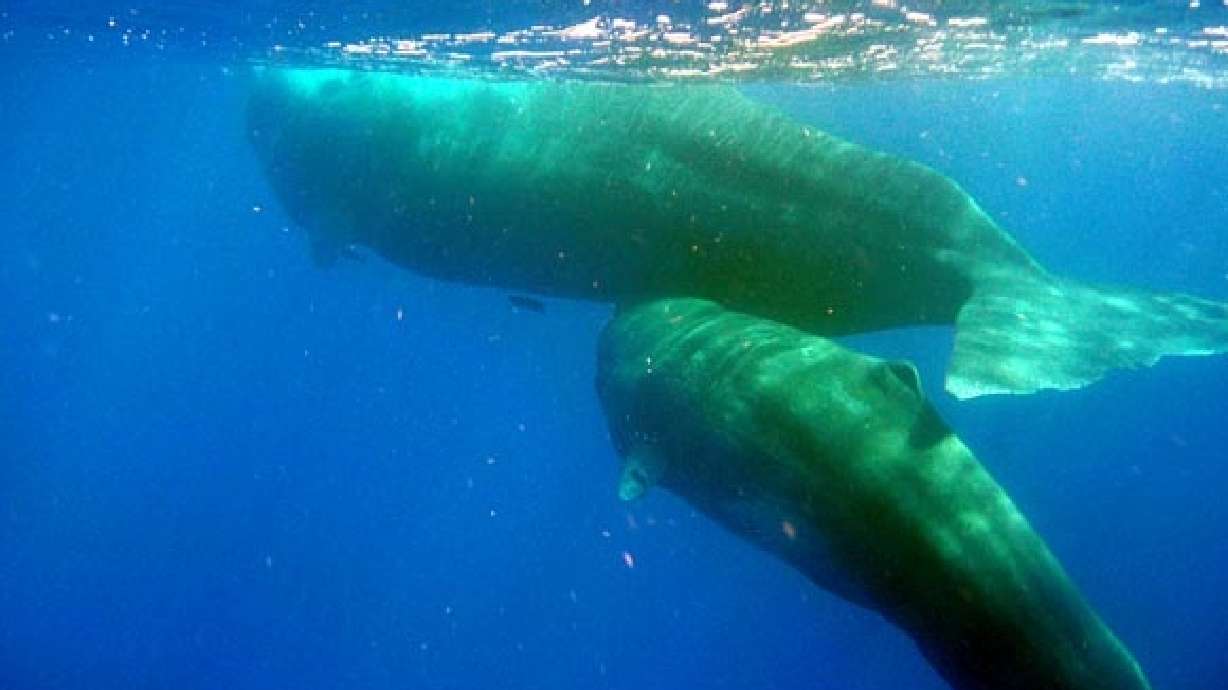Estimated read time: 2-3 minutes
This archived news story is available only for your personal, non-commercial use. Information in the story may be outdated or superseded by additional information. Reading or replaying the story in its archived form does not constitute a republication of the story.
It may sound like a whale of a tale, but new research suggests the "language" of the sperm whale contains different dialects and accents -- not unlike humans.
The sperm whale chats with others of its kind by making patterns of clicking sounds called codas. Researchers with the Dominica Sperm Whale Project recently spent seven weeks on the Caribbean island of Domenica hanging out with the native whales -- recording and analyzing the animal's calls.
On this particular trip, researchers found that not only do different codas mean different things -- but that each whale has an "accent" or "voice" that sets it apart from the rest of its pals -- making it easy for other whales to tell which member of the community is sending the message. Though the clicks are the same, the way in which they are pronounced makes each whale's voice different.
The sperm whale uses patterns of clicks called "codas" to communicate. The study reveals individual whales use a distinct "accent" when speaking -- setting them apart from the rest of the pod.
In some ways, it's like picking up the phone and recognizing the voice of the person on the other end without peeking at caller ID.
The findings -- published in the journal Animal Behaviour -- also indicate that whales "speak" in dialects specific to the region in which they live. For example, according to the study, Caribbean whales communicate using different, distinct codas that are different from Pacific whales.
Think of the contrast between a southern belle and a New York cabbie.
There is, however, a universal whale language that scientists have coined the "Five Regular" call. It's a pattern of five evenly spaced clicks that is used by sperm whales across the world.
Also interesting to note: researchers found the baby sperm whale "babbles" -- not unlike an infant or toddler. Further studies will examine how each baby whale develops its "accent."
Researchers say the biggest threat to the sperm whale is human pollution. Not only is pollution toxic to the ocean, but it can actually create "noise" that makes it extremely hard for whales to communicate effectively. That "noise includes shipping traffic, underwater explosions and military sonar, according to the study.
"No one wants to live in a rock concert," said Dalhousie University (in Nova Scotia) Ph.D. student Shane Gero -- a main contributor to the study. He went on to explain that noise pollution is especially problematic because the ocean "is a totally different sensory world."
Researchers say when sperm whales dive into deep, pitch-black waters, they rely on sound in order to communicate with each other and stay on course.
Email:jrogers@ksl.com
Image credit: Shane Gero








